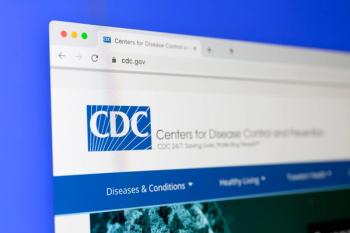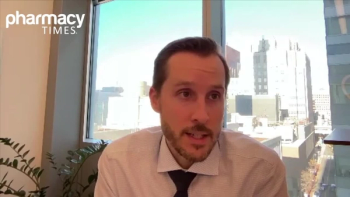
From Diagnosis to Delivery: How Multidisciplinary Teams Tackle Stage 3A Lung Cancer
Key Takeaways
- Stage 3A lung adenocarcinoma accounts for 40% of U.S. cases, necessitating integrated treatment approaches.
- Genetic testing and NGS are crucial for identifying actionable mutations and guiding targeted therapies.
Experts from Moffitt Cancer Center discuss the benefit of multidisciplinary teams in lung cancer care.
Stage 3A adenocarcinoma of the lung is the most common primary lung cancer in the United States and represents approximately 40% of all cases. At the NCODA Fall Summit in Orlando, Florida, panelists from the Moffitt Cancer Center shared their integrated approaches to treating this disease, highlighting the importance of genetic testing, the efficacy of adjuvant immunotherapy and targeted treatments, insurance coverage challenges associated with next-generation sequencing (NGS) testing, and the role of multidisciplinary teams in optimizing patient care.1,2
The panel moderator Kevin Hicks, PharmD, PhD, associate member at the H. Lee Moffitt Cancer Center, associate professor in the department of oncologic sciences at the University of South Florida, and adjunct professor in Cleveland Clinic genomic medicine, opened the discussion with a hypothetical clinical case on a 58-year-old non-smoker who was recently diagnosed with stage 3A lung adenocarcinoma. He initially presented with shortness of breath and chronic cough, so he was treated for pneumonia. However, his symptoms persisted, leading to another appointment with his primary care physician where an X-ray revealed a 5.1-centimeter mass in the left lower lobe of the lung. A biopsy at his local hospital confirmed the diagnosis of lung adenocarcinoma before he was transferred for further testing at Moffitt Cancer Center. There, his care team performed PET, CT, and MRI scans to determine his stage, as well as genetic testing and NGS, which revealed that his tumor harbors an ALK gene fusion.
After discussing the treatment options with the multidisciplinary team, including the medical oncologist, thoracic surgeon, and radiation oncologist, it was determined that the patient had resectable stage 3A disease. With this in mind, they recommended upfront surgical resection, followed by adjuvant therapy with the ALK tyrosine kinase inhibitor alectinib (Alecensa; Genentech), based on the results of the ADAURA trial (NCT02511106). A multidisciplinary approach between a nurse navigator, medical oncologist, molecular pathologist, and pharmacist is required to coordinate these therapeutic efforts and ensure effective treatment of the patient’s disease.3
“[The patient] contacted Moffitt Cancer Center to establish care. For example, an oncology nurse navigator can help [the patient] with resources for financial assistance to pay for cancer treatment, transportation to Moffitt Cancer Center, [and] scheduling necessary appointments, including imaging laboratory and appointments with oncologists, or all of the above,” said Hicks.
Nurse navigators are professional registered nurses with oncology-specific clinic knowledge who offer individualized assistance to patients, families, caregivers, to help overcome health care assistant barriers. They are patients’ advocates and are crucial for coordinating quality patient-centered care through effective correspondence with interdisciplinary teams, and are responsible for care from prevention and screening, through diagnosis and treatment, to end of life.
Donna Gallenstein, BSN, RN, GERO-BC, a nurse navigator supporting the thoracic oncology program at Moffitt Cancer Center, offered examples of the many ways she is involved in delivering treatments to patients. Nurse navigators are often involved in addressing larger care barriers such as financial assistance, transportation to treatment facilities, and patient health literacy. However, disease management and medical support do remain essential parts of the nurse navigator’s role in patient care, providing monitoring, symptom management, and aiding treatment transitions.
“We want to make sure that they can get around in our clinic, either by walker or wheelchair, disease management, understanding the disease process,” said Gallenstein. “And that goes along with low health care literacy. Some of our patients just don't know even what their disease is or how it's going to impact them, or how they even got it, even though they may be a smoker or a drinker, or they were exposed to asbestos.”
Additionally, Gallenstein highlights their role in the case of natural disaster. Due to the devastating impact of hurricanes Helene and Milton in 2024, many patients of Moffitt Cancer Center were displaced, and nurse navigators were integral to communication with the Federal Emergency Management Agency to connect these patients with needed resources.
Medical oncologists are typically the first specialist that comes to mind when considering who is part of a cancer care team. They are responsible for ordering necessary tests, as well as helping patients understand their results. In the case of the hypothetical patient, Sonam Puri, MD, assistant member of the department of thoracic oncology at Moffitt Cancer Center, and specialist in medical oncology with a focus on the treatment of thoracic malignancies, discusses the findings from his PET, CT, and MRI scans.
“He had a PET/CT, which showed an [fludeoxyglucose-18 (FDG)] avid left lower lobe mass of 5.1 centimeter, with an FDG avid left [sic] lymphodinopathy. The MRI brain scan thankfully had no evidence of intracranial metastatic disease,” Puri said. “During our first visit, we did order a Moffitt STAR next generation sequencing panel, which is our in-house testing for genomic alterations in patients with lung cancer and other cancers. PD-L1 testing was already ordered and showed that he had a high expression of 90%.”
Based on these results, the characteristics of the patient’s disease indicate he is stage 3. Puri explains that by this stage, coordination between the medical oncologist, thoracic surgeon, and radiologist becomes increasingly important to decide whether surgery is an option and what treatment is needed before the surgery can take place. She highlights the use of adjuvant immunotherapy based on data from the PACIFIC trial (NCT02125461), which originated at Moffitt before expanding worldwide due to significant progression free survival (PFS) benefit. The researchers randomized patients who had completed concurrent chemo radiation for stage 3 non–small cell lung cancer to receive durvalumab (Imfinzi; Medimmune/AstraZeneca), an anti PD-L1 immunotherapy versus placebo.The primary end point was PFS, which was significantly improved in the durvalumab group compared to placebo.4
Identifying and analyzing genomic alterations is crucial to effectively guide treatment choices, which is performed by molecular pathologists through NGS sequencing and extraction of DNA and RNA from tumor tissue samples. Through sequencing, pathologists can observe genetic alterations that can be targeted with specific agents, offering patients more precise therapies.
“So, what are we looking for? When we're doing the sequencing, we're looking for a whole slew of mutations and a whole slew of genes,” said Theresa Boyle, MD, PhD, molecular pathologist and lung cancer clinical investigator at the Moffitt Cancer Center. “It all started with EGFR [epidermal growth factor receptor]. That was the great breakthrough when patients with EGFR mutations and their lung cancer responded to [EGFR] inhibitors really well, and then ALK fusions, and then ROS1 fusions, and it just kept coming in.”
NGS genomic profiling, or massively parallel sequencing, involves processing biopsied tumor tissue samples into a paraffin wax block, which are then separated into paper thin section. The sections are placed onto a slide and stained for the pathologist to review and make a diagnosis, and unstained tissue sections are sent to the molecular lab for DNA and RNA extraction. The DNA and RNA samples are then run through high-throughput sequencing machines, such as the NovaSeq, which can process up to 50 samples at a time.
To most effectively analyze the immense amount of sequencing data, it goes through an informatics processing pipeline that identifies the most clinically relevant genetic alterations. After interpreting the results, the molecular pathologist connects with the medical oncologist to determine the appropriate targeted therapy options for the patient. Hicks leads those efforts at Moffitt Cancer Center to integrate precision pharmacotherapy into routine patient care, bridging the gap between molecular pathology and clinical oncology to optimize treatment selection and outcomes for patients with lung cancer.
Final delivery of the treatment is typically managed by the pharmacy care team, from managing copayments and insurance coverage to providing patient education or counseling. The financial burden of cancer treatment can be a significant barrier for patients, who often encounter complications with prior authorizations and inadequate insurance coverage.
“Our technicians are definitely our liaisons, our game managers, if you will, in this role,” said Daniel Melzer, PharmD, BCOP, board certified clinical oncology pharmacist at the Moffitt Cancer Center. “They're not necessarily helping only with the prior authorization; once that gets approved, then the hard part comes up: the copayment.”
Patient education and counseling is one of the most significant factors that can determine treatment outcomes. Pharmacists help reinforce information provided by nurse navigators and medical oncologists, as well as provide medication-specific information or answer questions and concerns.
“There's a lot of anxiety. There's a lot of 'I don't know what to expect.' They're thinking, ‘Am I going to puke my guts out? Am I going to be going to the bathroom more?’ Or maybe they have friends or family that got chemotherapy, or some type of therapy and they had a pretty bad experience. It’s a lot of setting expectations and knowing that, yes, some of these drugs are horrible, but not all these drugs are horrible,” he said.
The panel at the NCODA Fall Summit emphasized the importance of a multidisciplinary approach in managing stage 3A lung adenocarcinoma. By integrating advanced genetic testing, targeted therapies, and the coordinated efforts of diverse professionals—from oncologists and pathologists to nurse navigators and pharmacists—providers can offer a more precise, patient-centered approach to cancer care. This teamwork exemplifies a shift toward personalized, accessible care that addresses both clinical and financial barriers, offering hope for patients.
REFERENCES
1. Myers D, Wallen J. Lung adenocarcinoma. National Library of Medicine. June 12, 2023. Accessed October 25, 2024. https://www.ncbi.nlm.nih.gov/books/NBK519578/
2. Hicks K, Boyle T, Gallenstein D, et al. Precision medicine in lung cancer: the role of the medically integrated team. NCODA 2024 Fall Summit. October 25, 2024. Orlando, Florida.
3. Azd9291 versus placebo in patients with stage ib-iiia non-small cell lung carcinoma, following complete tumour resection with or without adjuvant chemotherapy. (adaura). ClinicalTrials.gov Identifier: NCT02511106. Updated August 21, 2024. Accessed October 25, 2024. https://clinicaltrials.gov/study/NCT02511106
4. A global study to assess the effects of medi4736 following concurrent chemoradiation in patients with stage iii unresectable non-small cell lung cancer (pacific). ClinicalTrials.gov Identifier: NCT02125461. Updated October 10, 2023. Accessed October 25, 2024. https://clinicaltrials.gov/study/NCT02125461
Newsletter
Stay informed on drug updates, treatment guidelines, and pharmacy practice trends—subscribe to Pharmacy Times for weekly clinical insights.














































































































































































































